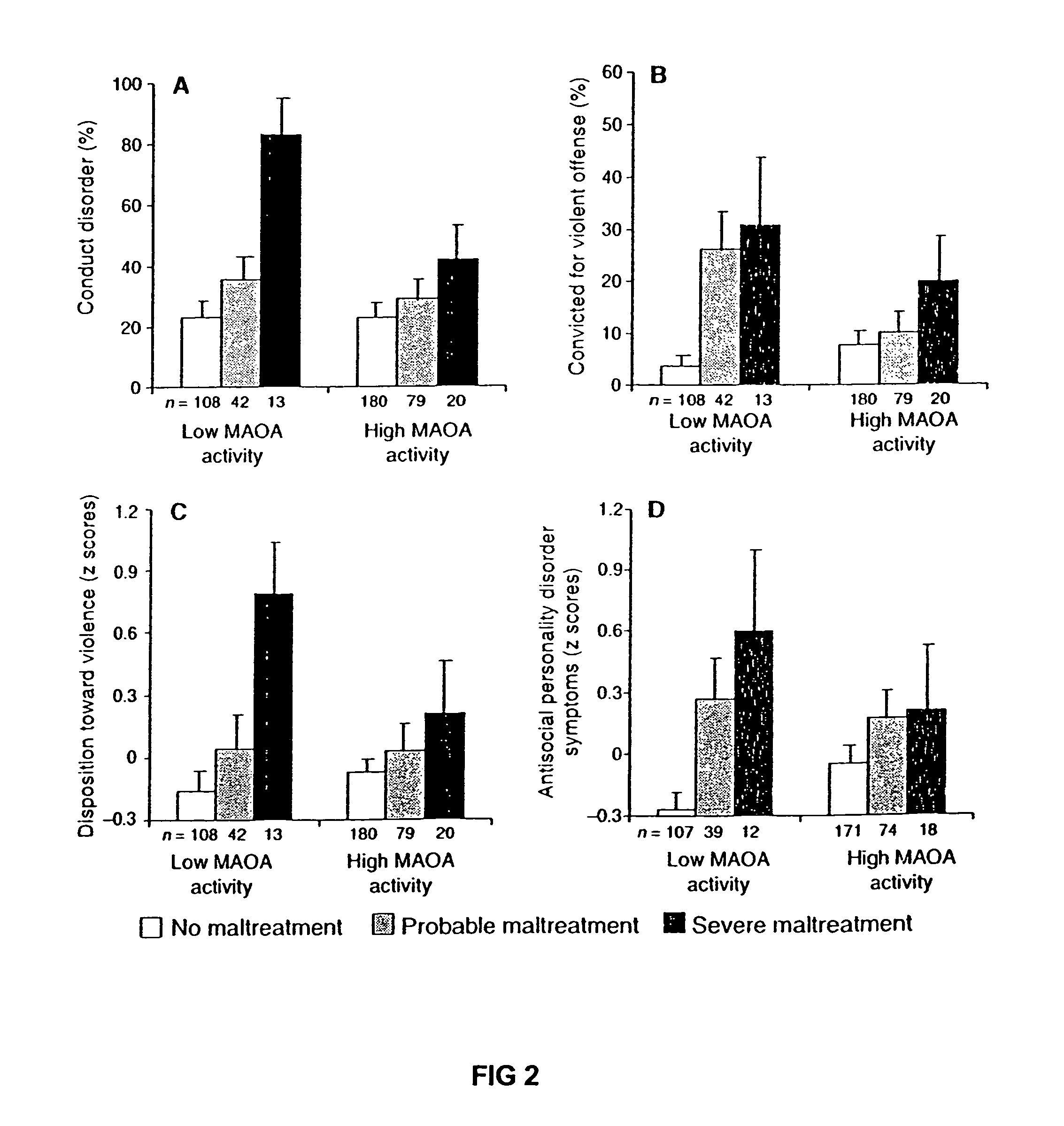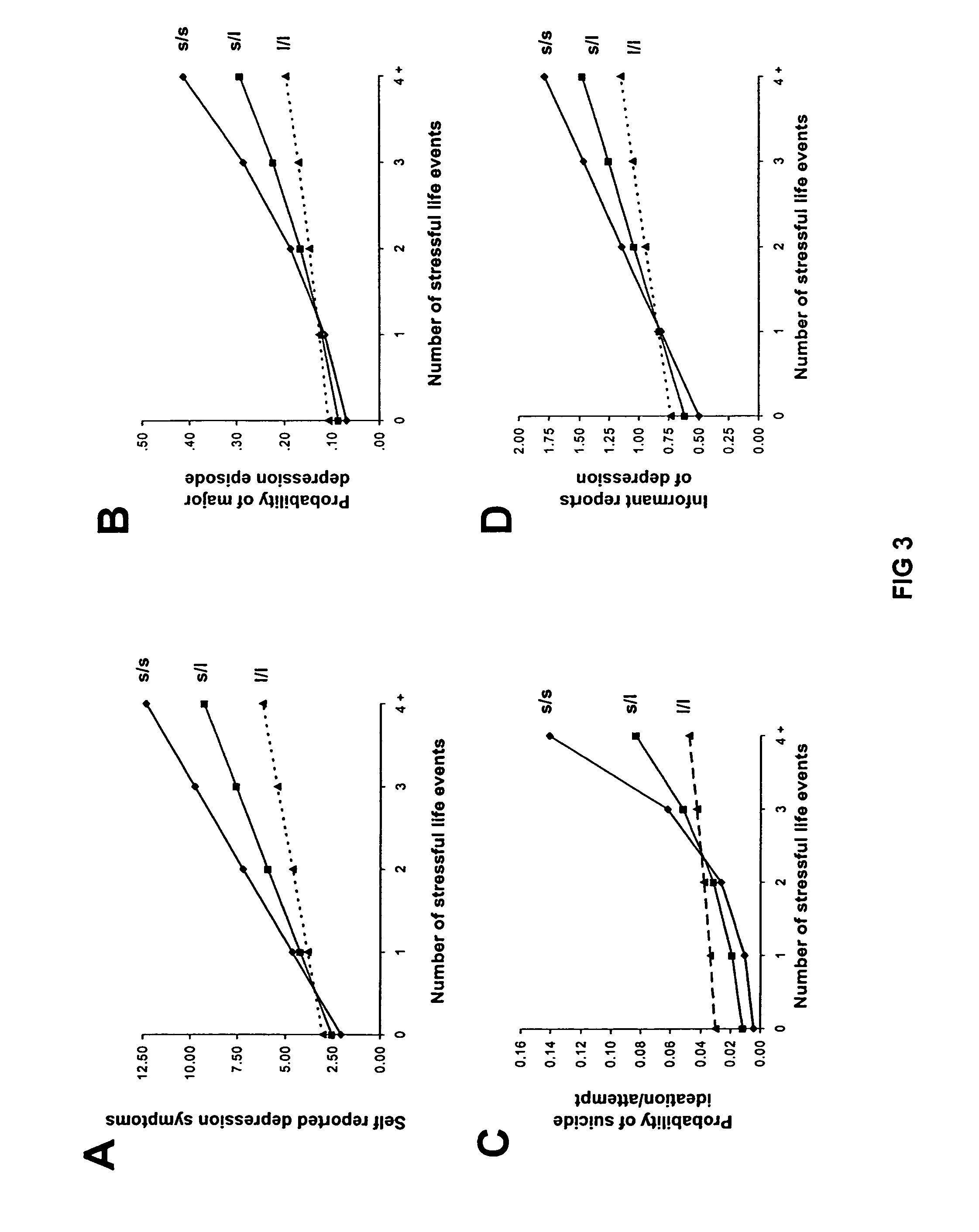Method for assessing predisposition to depression
a predisposition and predisposition technology, applied in the field of predisposition assessment, can solve the problems of evidencing, reducing the likelihood of developing conduct disorder, and evidencing, and achieving the effect of moderating the effect of the environment on the phenotype of behavior disorder
- Summary
- Abstract
- Description
- Claims
- Application Information
AI Technical Summary
Benefits of technology
Problems solved by technology
Method used
Image
Examples
example 1
[0047]We studied a large sample of male children from birth to adulthood to determine why some children who are maltreated grow up to develop antisocial behavior whereas others do not. A functional polymorphism in the gene encoding the neurotransmitter metabolizing enzyme monoamine oxidase A (MAOA) was found to moderate the effect of maltreatment. Maltreated children with a genotype conferring high levels of MAOA expression were less likely to develop antisocial problems. These findings may partly explain why not all victims of maltreatment grow up to victimize others, and they provide epidemiological evidence that genotypes can moderate children's sensitivity to environmental insults. In this study, individual differences at a functional polymorphism in the promoter of the monoamine oxidase A (MAOA) gene were used to characterize genetic susceptibility to maltreatment and to test whether the MAOA gene modifies the influence of maltreatment on children's development of antisocial be...
example 2
[0074]Members of the Dunedin Multidisciplinary Health and Development Study were also tested in connection with a hypothesis relating to conditional association between the short allele of Human 5-HTT and depression, where the association is conditioned on experience of stressful life events.
[0075]Research sample. Participants were members of the Dunedin Multidisciplinary Health and Development Study. The birth cohort of 1,037 children (52% male) was established at age 3 when the investigators enrolled 91% of the consecutive births between April 1972 and March 1973 in Dunedin, New Zealand. Cohort families represent the full range of socioeconomic status in the general population of New Zealand's South Island. Follow-ups have been carried out at ages 3, 5, 7, 9, 11, 13, 15, 18, 21, and most recently at age 26, when we assessed 96% of the living cohort members. The sample and its history are described in detail elsewhere.
[0076]Serotonin transporter genetic variation. We selected to st...
PUM
| Property | Measurement | Unit |
|---|---|---|
| reactivity | aaaaa | aaaaa |
| concentrations | aaaaa | aaaaa |
| Disorders | aaaaa | aaaaa |
Abstract
Description
Claims
Application Information
 Login to View More
Login to View More - R&D
- Intellectual Property
- Life Sciences
- Materials
- Tech Scout
- Unparalleled Data Quality
- Higher Quality Content
- 60% Fewer Hallucinations
Browse by: Latest US Patents, China's latest patents, Technical Efficacy Thesaurus, Application Domain, Technology Topic, Popular Technical Reports.
© 2025 PatSnap. All rights reserved.Legal|Privacy policy|Modern Slavery Act Transparency Statement|Sitemap|About US| Contact US: help@patsnap.com



